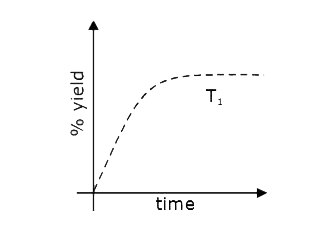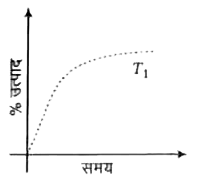The principle goal of chemical synthesis is to maximize the conversion of reactants into products. Le-Chatlier's principle can be applied to achieve this goal.
Preidct the conditions to be applied to maximize the production of ammonia in the following reaction:
N2(g)+3H2(g)⇔2NH3(g)ΔH=−92.38kjmol−1Solution in Malayalam
High pressure, optimum temperature (700 K), presence of iron catalyst and presence of 'potassium oxide and aluminium oxide as promoters.
Topper's Solved these Questions
Similar Questions
Write the structures of the following compounds 2-Chloro-3-methylpetane.
00:58View SolutionWhat are polymers?
05:26View SolutionFor the reaction N_(2)(g)+3H_(2)(g)to2NH_(3)(g) , which of the following is correct regarding DeltaH ?
01:51View SolutionOn the basis of Le Chatelier principle explain how temperature and pressure can be adjusted to increase the yield of ammonia int he following reaction. N_2(g)+3H_2(g)hArr2NH_3(g), DeltaH=-92.38KJ Mol^(-1) What will be the effect of addition of argon to the avove mixture at cosntant volume ?
01:30View SolutionThe enthalpy of formation of ammonia is -46.0 KJ mol^(-1) . The enthalpy change for the reaction 2NH_(3)(g)rarr N_(2)(g)+3H_(2)(g) is :
View SolutionFor the reaction N_(2)+3H_(2)iff2NH_(3),DeltaH=?
04:23View SolutionThe % yield of ammonia as a function of time in the reaction N2(g)+3H2(g)⇔2NH3(g),(g)ΔH<0 at (P,T1) is given below
 02:16View Solution
02:16View SolutionFor the reaction, N_(2)(g)+3H_(2)(g)rarr2NH_(3)(g) express the rate of the reaction with respect to the reactants and the product formed.
01:14View Solutionअभिक्रिया, N2(g)+3H2(g)↔2NH3(g), ΔH<0 में अमोनिया के प्रतिशतता उत्पाद (% yield) की समय (time) पर निर्भरता (p,T1) पर नीचे दर्शाई गई है
यदि यह अभिक्रिया (p,T2) पर की जाए, जहाँ T2>T1, अमोनिया के % उत्पाद की समय पर निर्भरता प्रदर्शित करता है
 04:51View Solution
04:51View SolutionFor the reaction N2+3H2⇔2NH3,ΔH is
View SolutionIn the manufacture of ammonia as
3H2(g)+N2(g)⇔2NH3(g),ΔH=-93.8 kJ
Work out the conditions for maximum yield of ammonia (Apply Le-Chatelier's principle).View SolutionEnthalpy of formation of ammonia is −46.0kJmol−1.The enthalpy change for the reaction:
2NH3(g)→N2(g)+3H2(g)01:32View SolutionThe reaction quotient (Q) for the reaction
N2(g)+3H2(g)⇔2NH3(g)
is given by Q=[NH3]2[N2][H2]3
The reaction will proceed from right to left ifView Solutionअभिक्रिया N2(g)+3H2(g)<⇒2NH3(g) में ΔH=−93.6kJ है, अमोनिया की लब्धि (yield) नहीं बढ़ेगी, यदि
View SolutionWhich temperature and pressure will be to obtain more products in the following reaction ? Explain by Le-Chatelier principle.
(i)N2(g)+3H2(g)⇔2NH3(g),ΔH=−93.8kJ mol−1
(ii)H2(g)+CO2(g)⇔CO(g)+H2O(g),ΔH=+41kJ mol−1
(iii)N2(g)+O2(g)⇔2NO(g),ΔH=175 kJ
(iv)CO(g)+2H2(g)⇔CH3OH(g),ΔH=−92.0kJ mol−102:36View SolutionOn basis of Le-Chatelier principle explain how can the temperature and pressure be adjusted to increase the yield of ammonia in the following reaction. N_(2(g)) + 3H_(2(g)) hArr 2NH_(3(g)) , DeltaH=-92.38 "kJ mol"^(-1) What will be the effect of addition of argon to the above reaction mixture at constant volume ?
02:55View Solution

